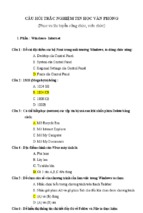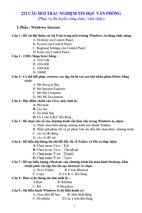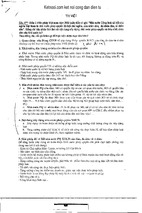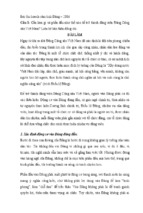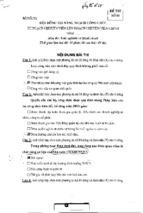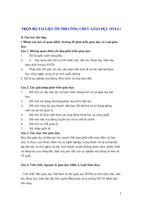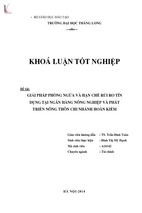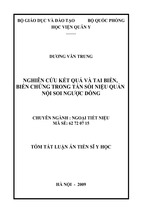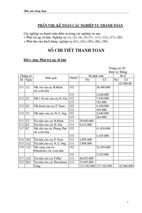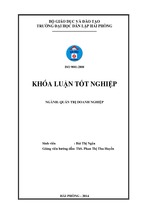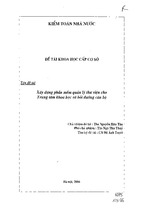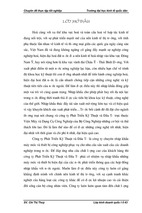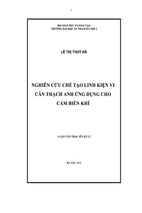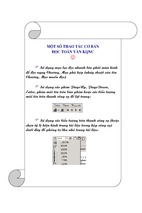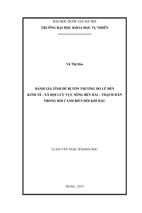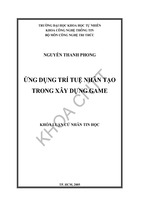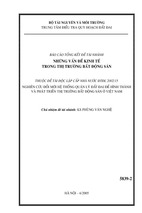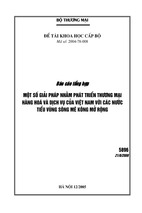Cognitive Linguistics argues that language is governed by general cognitive principles,
rather than by a special-purpose language module. This introductory textbook
surveys the field of cognitive linguistics as a distinct area of study, presenting
its theoretical foundations and the arguments supporting it. Clearly organized and
accessibly written, it provides a useful introduction to the relationship between
language and cognitive processing in the human brain. It covers the main topics
likely to be encountered in a course or seminar, and provides a synthesis of
study and research in this fast-growing field of linguistics. The authors begin by
explaining the conceptual structures and cognitive processes governing linguistic
representation and behavior, and go on to explore cognitive approaches to
lexical semantics, as well as syntactic representation and analysis, focusing on
the closely related frameworks of cognitive grammar and construction grammar.
This much-needed introduction will be welcomed by students in linguistics and
cognitive science.
This page intentionally left blank
Cognitive Linguistics
Cognitive Linguistics argues that language is governed by general cognitive principles, rather than by a special-purpose language module. This introductory textbook surveys the field of cognitive linguistics as a distinct area of study, presenting
its theoretical foundations and the arguments supporting it. Clearly organized and
accessibly written, it provides a useful introduction to the relationship between
language and cognitive processing in the human brain. It covers the main topics likely to be encountered in a course or seminar, and provides a synthesis of
study and research in this fast-growing field of linguistics. The authors begin by
explaining the conceptual structures and cognitive processes governing linguistic representation and behavior, and go on to explore cognitive approaches to
lexical semantics, as well as syntactic representation and analysis, focusing on
the closely related frameworks of cognitive grammar and construction grammar.
This much-needed introduction will be welcomed by students in linguistics and
cognitive science.
william croft is Professor of Linguistics at the University of Manchester,
where he has taught since 1994. His primary areas of research are typology, cognitive linguistics, construction grammar, language change and verbal semantics.
He has previously published in this series Typology and Universals, 1st edition
(1990), and 2nd edition (2003), and is also the author of Radical Construction
Grammar (2001).
d. alan cruse was Senior Lecturer in Linguistics at the University of
Manchester, until he retired in 2001. He taught semantics, pragmatics and
psycholinguistics, and his primary areas of research are lexical semantics and
metaphor. He has previously published in this series Lexical Semantics (1986),
and is also the joint editor of Handbook of Lexicology (2002).
CAMBRIDGE TEXTBOOKS IN LINGUISTICS
General editors: s . r . a n d e r s o n, j. b r e s na n, b. c o m r i e ,
w. d r e s s l e r , c . e w e n, r . hu d d l e s t o n, r . l a s s ,
d. lightfoot, j. lyo ns, p. h. matthews, r. posner,
s. romaine, n. v. smith, n. vincent
In this series:
p. h . m at t h e w s Morphology Second edition
b. c o m r i e Aspect
r . m . k e m p s o n Semantic Theory
t. bynon Historical Linguistics
j. allwo od, l.-g. anderson and ö. dahl Logic in Linguistics
d. b. fr y The Physics of Speech
r. a. hudson Sociolinguistics Second edition
a . j. e l l i o t Child Language
p. h . m at t h e w s Syntax
a. redford Transformational Syntax
l . b au e r English Word-Formation
s. c. levinson Pragmatics
g. brown and g . y u l e Discourse Analysis
r . h u d d l e s t o n Introduction to the Grammar of English
r . l a s s Phonology
a. comrie Tense
w. k l e i n Second Language Acquisition
a. j. woods, p. fletcher and a. hughes Statistics in Language Studies
d. a. cruse Lexical Semantics
a. radford Transformational Grammar
m . g a r m a n Psycholinguistics
g . g . c o r b e t t Gender
h. j. giegerich English Phonology
r . c a n n Formal Semantics
j. l ave r Principles of Phonetics
f. r . pa l m e r Grammatical Roles and Relations
m. a. jones Foundations of French Syntax
a. radford Syntactic Theory and the Structure of English: A Minimalist Approach
r . d. va n va l i n, jr, and r . j. l a p o l l a Syntax: Structure, Meaning and Function
a. duranti Linguistic Anthropology
a . c r u t t e n d e n Intonation Second edition
j. k . c h a m b e r s and p. trudgill Dialectology Second edition
c. lyons Definiteness
r . k ag e r Optimality Theory
j. a. holm An Introduction to Pidgins and Creoles
c . g . c o r b e t t Number
c . j. e w e n and h. va n d er hulst The Phonological Structure of Words
f. r . pa l m e r Mood and Modality Second edition
b. j. b l a k e Case Second edition
e . g u s s m a n Phonology: Analysis and Theory
m. yip Tone
w. c r o f t Typology and Universals Second edition
f. c o u l m a s Writing Systems: an Introduction to their Linguistic Analysis
p. j. ho ppe r and e . c . t r au g o t t Grammaticalization Second edition
l. white Second Language Acquisition and Universal Grammar
i. plag Word-formation in English
w. c r o f t and d. a . c r u s e Cognitive Linguistics
a. siewierska Person
a. radford Minimalist Syntax: Exploring the Structure of English
d. b üring Binding Theory
Cognitive Linguistics
W I L L I A M C RO F T
University of Manchester
and
D . A L A N C RU S E
University of Manchester
Cambridge, New York, Melbourne, Madrid, Cape Town, Singapore, São Paulo
Cambridge University Press
The Edinburgh Building, Cambridge , UK
Published in the United States of America by Cambridge University Press, New York
www.cambridge.org
Information on this title: www.cambridge.org/9780521661140
This publication is in copyright. Subject to statutory exception and to the provision of
relevant collective licensing agreements, no reproduction of any part may take place
without the written permission of Cambridge University Press.
First published in print format 2004
-
-
---- eBook (EBL)
--- eBook (EBL)
-
-
---- hardback
--- hardback
-
-
---- paperback
--- paperback
Cambridge University Press has no responsibility for the persistence or accuracy of s
for external or third-party internet websites referred to in this publication, and does not
guarantee that any content on such websites is, or will remain, accurate or appropriate.
Contents
List of figures
List of tables
Preface
1 Introduction: what is cognitive linguistics?
page xii
xiii
xv
1
Part I: A conceptual approach to linguistic analysis
2 Frames, domains, spaces: the organization of conceptual
structure
2.1
2.2
2.3
2.4
2.5
2.6
Arguments for frame semantics
Concepts: profile-frame organization
Some consequences of the profile-frame/domain distinction
Extensions of the basic profile-frame/domain distinction
2.4.1 Locational and configurational profiles
2.4.2 Scope of predication
2.4.3 Relationships between domains
Domains and idealized cognitive models
Mental spaces
3 Conceptualization and construal operations
3.1
3.2
3.3
3.4
Introduction
Attention/salience
3.2.1 Selection
3.2.2 Scope of attention (dominion)
3.2.3 Scalar adjustment
3.2.4 Dynamic attention
Judgement/comparison
3.3.1 Categorization
3.3.2 Metaphor
3.3.3 Figure-ground alignment
Perspective/situatedness
3.4.1 Viewpoint
7
7
14
16
22
22
23
24
28
32
40
40
46
47
50
51
53
54
54
55
56
58
59
vii
viii
Contents
3.5
3.6
3.4.2 Deixis
3.4.3 Subjectivity
Constitution/Gestalt
3.5.1 Structural schematization
3.5.2 Force dynamics
3.5.3 Relationality (entity/interconnection)
Conclusion
4 Categories, concepts and meanings
4.1
4.2
4.3
4.4
4.5
4.6
4.7
Introduction
The classical model of category structure
The prototype model of category structure
4.3.1 Graded centrality
4.3.2 The representation of conceptual categories
4.3.3 Levels of categorization
4.3.4 Shortcomings of prototype theory
4.3.5 The frame-based account of prototype effects
A dynamic construal approach to conceptual categories
4.4.1 Category boundaries
4.4.2 Frames
4.4.3 Levels of categorization
The dynamic construal of meaning
4.5.1 Contextualized interpretation
4.5.2 Purport
4.5.3 Constraints
4.5.4 Construal
Structural and logical aspects of meaning
Part I: Concluding remarks
59
62
63
63
66
67
69
74
74
76
77
77
81
82
87
91
92
93
95
96
97
98
100
101
103
104
105
Part II: Cognitive approaches to lexical semantics
5 Polysemy: the construal of sense boundaries
5.1
5.2
5.3
Introduction
Full sense boundaries
5.2.1 Homonymy and polysemy
5.2.2 Entrenchment
5.2.3 Boundary effects
5.2.4 The nature of full sense units
Sub-sense units with near-sense properties
5.3.1 Facets
5.3.2 Microsenses
5.3.3 Ways-of-seeing
5.3.4 Semantic components and low-autonomy active zones
109
109
110
111
111
112
115
116
116
126
137
138
Contents
5.4
5.3.5 Contextual modulation
Autonomy: summary
6 A dynamic construal approach to sense relations I:
hyponymy and meronymy
6.1
6.2
Hyponymy
6.1.1 Introductory
6.1.2 Hyponymy and context
6.1.3 Relations between lexical items
6.1.4 Taxonymy
Lexical aspects of the part-whole relation
6.2.1 The part-whole relation
6.2.2 Meronymy
7 A dynamic construal approach to sense relations II:
antonymy and complementarity
7.1
7.2
7.3
7.4
7.5
Oppositeness
7.1.1 Aspects of the construal of oppositeness
7.1.2 Main varieties of opposite
7.1.3 Goodness-of-exemplar in opposites
Complementarity
7.2.1 Gradable vs. non-gradable construal of properties
7.2.2 Profiling against domains
Antonymy
7.3.1 A survey of antonym types
7.3.2 Monoscalar systems: polar antonyms
7.3.3 Bi-scalar systems
Variable construal of antonyms and complementaries
7.4.1 Absolute vs. relative construal
7.4.2 Scale features
Conclusion
8 Metaphor
8.1
8.2
8.3
Figurative language
The conceptual theory of metaphor
8.2.1 Introduction
8.2.2 Issues in the conceptual theory of metaphor
Novel metaphor
8.3.1 The life history of a metaphor
8.3.2 How do we recognize metaphors?
8.3.3 Blending Theory and novel metaphors
8.3.4 Context sensitivity
8.3.5 Asymmetry of vehicle and target
ix
140
140
141
141
141
143
146
147
150
151
159
164
164
164
165
166
167
167
167
169
169
172
181
185
185
189
192
193
193
194
194
198
204
204
206
207
209
210
x
Contents
8.4
8.5
8.6
Metaphor and simile
8.4.1 Two types of simile
8.4.2 Theories of the relation between simile and
metaphor
8.4.3 Metaphor-simile combinations
Metaphor and metonymy
8.5.1 Characterizing metonymy
8.5.2 Metaphor-metonymy relations
8.5.3 Types of indeterminacy
Conclusion
211
211
211
215
216
216
217
219
220
Part III: Cognitive approaches to grammatical form
9 From idioms to construction grammar
9.1
9.2
9.3
9.4
Introduction
The problem of idioms
Idioms as constructions
From constructions to construction grammar
10 An overview of construction grammars
10.1
10.2
10.3
Essentials of construction grammar theories
10.1.1 Grammatical representation: the anatomy of a
construction
10.1.2 The organization of constructional knowledge
Some current theories of construction grammar
10.2.1 Construction Grammar (Fillmore, Kay et al.)
10.2.2 Lakoff (1987) and Goldberg (1995)
10.2.3 Cognitive Grammar as a construction grammar
10.2.4 Radical Construction Grammar
Conclusion
11 The usage-based model
11.1
11.2
11.3
Grammatical representation and process
The usage-based model in morphology
11.2.1 Entrenchment and representation of word forms
11.2.2 Regularity, productivity and default status
11.2.3 Product-oriented schemas
11.2.4 Network organization of word forms
11.2.5 Conclusion
The usage-based model in syntax
11.3.1 Type/token frequency, productivity and
entrenchment
11.3.2 Product-oriented syntactic schemas
225
225
229
236
247
257
257
257
262
265
266
272
278
283
290
291
291
292
292
295
300
302
307
308
308
313
Contents
11.4
11.3.3 Relevance and the organization of construction
networks
11.3.4 The acquisition of syntax and syntactic change
Conclusion
12 Conclusion: cognitive linguistics and beyond
References
Author index
Subject index
xi
318
323
326
328
330
344
347
Figures
2.1
2.2
2.3
2.4
2.5
4.1
7.1
7.2
7.3
7.4
7.5
10.1
10.2
RADIUS and CIRCLE
NIECE
Domain structure underlying the concept of the letter T
Specific and nonspecific indefinites
Mental space diagram for example (29)
Boundaries of AIRPLANE, GLIDER and HANG GLIDER
A simplified monoscalar system
A disjunct equipollent system
A parallel equipollent system
An overlapping system
A full monoscalar system
The symbolic structure of a construction
The relation between form and function in a componential
syntactic theory
10.3 The relation between form and function in
construction grammar
10.4 Simplified generative grammar and construction grammar
representations of Heather sings
10.5 Elements, components and units of a construction
xii
page 15
23
26
35
36
90
170
170
170
171
173
258
258
259
260
261
Tables
3.1 Linguistic construal operations as instances of general
cognitive processes
9.1 Types of idioms compared to regular syntactic expressions
9.2 The syntax-lexicon continuum
page 46
236
255
xiii
Preface
This book provides an overview of the basic principles and methods of
cognitive linguistics, in particular as they are applied to semantic and syntactic
issues. It is intended to be used as a textbook for a course on cognitive linguistics
for advanced undergraduates and postgraduate students, as well as functioning
as an introduction to this approach to language for linguists and researchers in
neighboring disciplines. Parts I and II may also function as a textbook for a course
on cognitive semantics, supplemented by case studies from the cognitive linguistic literature. Part III may also function as introductory reading for a course on
construction grammar, followed by readings from the literature that delve into the
details of particular theories of construction grammar and the analyses of particular
constructions.
The chapters of the book were independently written, but jointly discussed.
Croft is responsible for chapters 1–3 and 9–12, and Cruse for chapters 4–8 (this
fact will no doubt be obvious to the reader). Cruse also contributed to §3.2.1, and
Croft to §8.2. Although we have written our chapters independently, the book
represents a single coherent perspective on cognitive linguistics. We agree on all
of the major points, and most of the minor ones; what minor disagreements remain
do not compromise the integrity of the analysis as a whole.
Croft would like to thank members of the linguistics and psychology departments
at the Max Planck Institute for Evolutionary Anthropology, Leipzig, Germany, and
Jóhanna Barð dal, Chuck Fillmore, Laura Janda, Paul Kay and Ron Langacker for
their comments on earlier versions of Part III, and Liliana Albertazzi and the
participants in the Workshop on ‘Which Semantics?,’ Bolzano, Italy, 1995 for
their comments on topics dealt with in Part I. Cruse would like to thank Liliana
Albertazzi and fellow-participants (George Lakoff, Ron Langacker and Len Talmy)
at the Summer School on Cognitive Semantics, Bolzano, Italy, 1999; Arie Verhagen
and the students at the LOT Winter School, Leiden, Holland, 2002; and members
of the Equipe Rhéma, University of Lyon, France, for their comments on various
topics dealt with in the book. Last but not least, we both thank the students of
successive classes on cognitive linguistics at the University of Manchester, who
used materials that eventually became the chapters presented here. Of course, all
responsibility for the final product remains with us.
xv
1
Introduction: what is
cognitive linguistics?
Cognitive linguistics is taken here to refer to the approach to the study of
language that began to emerge in the 1970s and has been increasingly active since
the 1980s (now endowed with an international society with biennial conferences
and a journal, Cognitive Linguistics). A quarter century later, a vast amount of
research has been generated under the name of cognitive linguistics. Most of the
research has focused on semantics, but a significant proportion also is devoted
to syntax and morphology, and there has been cognitive linguistic research into
other areas of linguistics such as language acquisition, phonology and historical
linguistics. This book can only outline the basic principles of the cognitive linguistic approach and some of its more important results and implications for the study
of language. In this chapter, we briefly describe the major hypotheses of cognitive
linguistics (as we see them), and how we will develop these hypotheses in the rest
of the book.
We see three major hypotheses as guiding the cognitive linguistic approach to
language:
r
r
r
language is not an autonomous cognitive faculty
grammar is conceptualization
knowledge of language emerges from language use
These three hypotheses represent a response by the pioneering figures in cognitive
linguistics to the dominant approaches to syntax and semantics at the time, namely
generative grammar and truth-conditional (logical) semantics. The first principle
is opposed to generative grammar’s well-known hypothesis that language is an
autonomous (indeed, innate) cognitive faculty or module, separated from nonlinguistic cognitive abilities. The second principle is opposed to truth-conditional
semantics, in which a semantic metalanguage is evaluated in terms of truth and
falsity relative to the world (or, more precisely, a model of the world). The third
principle is opposed to reductionist tendencies in both generative grammar and
truth-conditional semantics, in which maximally abstract and general representations of grammatical form and meaning are sought and many grammatical and
semantic phenomena are assigned to the ‘periphery’.
1
2
Introduction
Generative grammar and truth-conditional semantics are of course still vigorous
research paradigms today, and so cognitive linguists continue to present arguments
for their basic hypotheses as well as exploring more specific empirical questions
of syntax and semantics within the cognitive linguistic paradigm. Some of these
arguments will be presented in the course of this book. Here we describe in somewhat more detail the content of these three hypotheses and how they are manifested
in subsequent chapters.
The first hypothesis is that language is not an autonomous cognitive faculty. The
basic corollaries of this hypothesis are that the representation of linguistic knowledge is essentially the same as the representation of other conceptual structures,
and that the processes in which that knowledge is used are not fundamentally
different from cognitive abilities that human beings use outside the domain of
language.
The first corollary is essentially that linguistic knowledge – knowledge of meaning and form – is basically conceptual structure. It is probably not difficult to accept
the hypothesis that semantic representation is basically conceptual (though what
that entails is a matter of debate; see below). But cognitive linguists argue that
syntactic, morphological and phonological representation is also basically conceptual. This might appear counterintuitive at first: sounds are physical entities,
and ultimately so are utterances and their formal structure. But sounds and utterances must be comprehended and produced, and both of those processes involve
the mind. Sounds and utterances are the input and output of cognitive processes
that govern speaking and understanding.
The second corollary is that the cognitive processes that govern language use,
in particular the construction and communication of meaning by language, are
in principle the same as other cognitive abilities. That is, the organization and
retrieval of linguistic knowledge is not significantly different from the organization
and retrieval of other knowledge in the mind, and the cognitive abilities that we
apply to speaking and understanding language are not significantly different from
those applied to other cognitive tasks, such as visual perception, reasoning or motor
activity. Language is a distinct human cognitive ability, to be sure. From a cognitive
perspective, language is the real-time perception and production of a temporal
sequence of discrete, structured symbolic units. This particular configuration of
cognitive abilities is probably unique to language, but the component cognitive
skills required are not.
This position is sometimes taken as a denial of an innate human capacity for
language. This is not the case; it is only a denial of an autonomous, special-purpose
innate human capacity for language. It is of course reasonable to assume that there
is a significant innate component to general human cognitive abilities, and that
some of those innate properties give rise to human linguistic abilities that no other
- Xem thêm -

